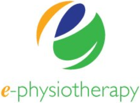Wrist pain can occur from excessive mouse and keyboard work, racquet sports, playing muscial instruments, falls, trauma and after pregnancy. Common problems include tendinopathy (tendinitis and tenosynovitis), stiffness in the small bones of the wrist (carpal bones) and carpal tunnel syndrome.
De Quervains’s is a specific tendinosynovitis of two thumb tendons called extensor pollicis brevis (EPB) and abductor pollicis longus (APL). These tendons have a sheath around them that helps to lubricate their movement around bony areas of the wrist. This is most commonly found in nursing mothers and may be due to hormonal changes during and after pregnancy that increases soft tissue flexibility along with the extra load on these tendons when holding the baby’s head while breastfeeding.
Stiffness in the wrist carpal bones can cause pain, especially with wrist extension and/or weight bearing through the wrist. This can start with a fall or simply with excessive wrist use in the office using a mouse and keyboard, or with racquet sports. Degenerative/arthritic changes will also cause wrist stiffness and pain. The carpal bones can become subluxed toward the back (dorsum) of the wrist and this blocks the normal glide of these bones to allow wrist extension.
It is important to remember that wrist pain can often be referred from your neck, shoulder or elbow. For this reason your first physiotherapy assessment will assess these areas as well as the wrist.
If treatment of the wrist is required it will usually involve mobilising the carpal bones, reducing subluxed carpal bones, and myofascial release or deep tissue massage of muscles and tendons. Treating carpal tunnel syndrome with physiotherapy can help reduce symptoms, but sometimes a steroid injection or surgey may be needed. These too, unfortunately, only work some of the time. Using a wrist splint, set in neutral, not wrist extension, can help to reduce night time symptoms but day time use should be avoided otherwise increased weakness and stiffness can cause more problems.
Tendinopathy can be treated well with extracorporeal shock wave therapy, dry needling/acupuncture, and graded strengthening exercises. Tenosynovitis of the thumb tendons (De Quervain’s) can be helped with extracorporeal shock wave therapy, ultrasound, laser therapy, deep tissue massage, and acupuncture/dry needling. Resting from activities that aggravate the problem is usually necessary and short term use of a splint to reduce movement may be useful. Long term use of a splint does not help and can lead to weakness and further issues in the wrist. If the problem is from mouse or keyboard work, a workstation assessment can be helpful. Changing your mouse to an upright mouse can help come wrist and forearm problems. Nursing mothers can reduce the load on their thumbs by altering the position of their thumbs, to reduce loading, when breastfeeding. If you need treatment for your wrist or thumb problem, book an appointment with e-physiotherapy Edinburgh.

